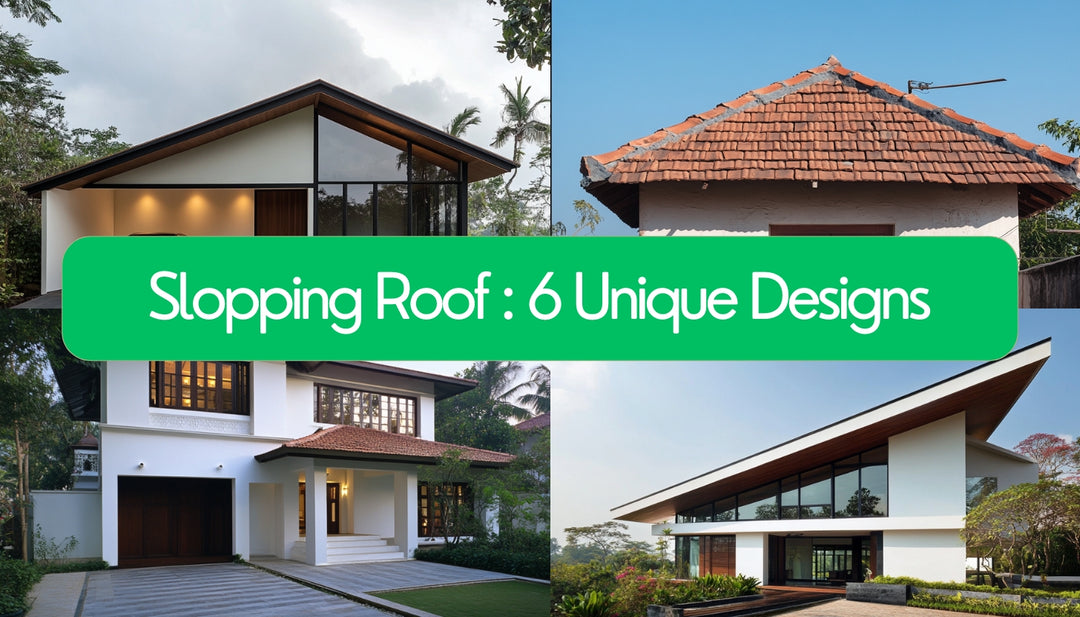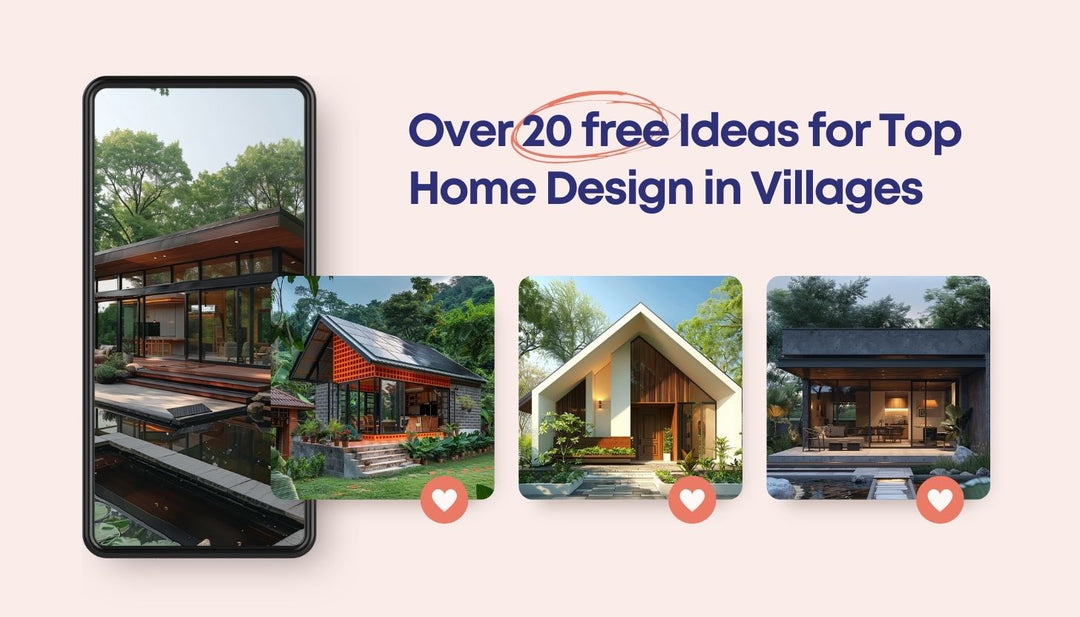4 Step Guide to Complete Home Design from Scratch
Home Blueprint: The Complete Guide to Creating Your House

Homes. We've all grown up in them, visit them, love them and build new ones, but what are they exactly? How do they are made? The short answer is that they are structures to facilitate your family's range of activities, protect and inspire your life. Still, the long answer is much more complex than that. That's what we're here to help answer.
While there are many paths you can take to create a home, a popular choice time and again is to utilize a home builder. Whether you are a beginner or a design professional, online home builders like Ongrid Design offer solutions for your needs. Our complete guide will walk you through the essential steps you need to build a Home using Ongrid. This article will also help you understand all of the moving parts that go into a home, no matter which route you take.
Here are some of the items to consider while building a home:
- Types of Homes
- Creation Options
- Home-Elements
- Design & Material
Let's dive into more details about each of the elements.
01. Types of Homes
The creation process of your home begins at the conception phase, where you are simply thinking about what kind of home you want. This thought should be driven by your house's goals and what type of lifestyle it needs to host. Do you want to make money by collecting rent? Perhaps you want to combine your work life in the house? Whatever your ultimate goal is, it should be reflected in your choice of home. Only from that point can you truly understand what platform is best suited for your needs and the specifics of what your home should contain.
If you have not yet decided on what kind of home best suits you, we suggest taking the time to learn more about the different types of homes available and to pursue these home ideas. With so many other options out there, this research will help you narrow down the playing field and make an informed decision about your home. We recommend that you list down some items that stand out to you as you go through these lists and then return to this guide to get you through the rest of the creation process.
To give you an idea of a few options, here are some of the most popular types of homes and how you can go about creating them:

- Rental homes to develop a monetary opportunity for your investment.
- Family homes are typical houses explicitly made to cater to your family's lifestyle and growth.
- Working/Business Homes are mixed-use developments that help you carry out your work in the vicinity of your house.
Take note that home types are not mutually exclusive. You can create a Family home that has a room sublet for rent. Or you can start a Rental Home and then accommodate your work in the house. One of the best parts of creating your own home is that you have the flexibility to decide what makes the most sense for you. Many different elements can be brought together to create a house that fits your needs.
"Just as us humans, every home has its own needs. Try to define what those are and what goals you'd like to achieve to create a beautiful house that is genuinely original.
-Sourav Pathak, Lead at Experience Designer at Ongrid.
If you have already decided on the type of house you wish to create, you can start from scratch or browse through home plan templates divided into categories. There you will find tons of designer-made templates for any home type niche imaginable. This can help you draw more specific inspiration and understand what elements you might want to include in your house.
02.Creation Options
There are many different ways to create a house and various Ongrid tools that can help you, depending on your experience and needs. Below are some of the routes that we suggest, along with an explanation of how they work and who they are best suited for:
- Ongrid Home Plan Templates
- Hire a Professional
1. Ongrid Home Plan Editor
Best for: Anyone looking to create their own home. Can be a beginner or experienced.
The Ongrid Editor, as it sounds, is a platform that you can use to create and edit your home plans. It employs informative, designed plans that enable you to add or change your home elements easily and has many built-in design options. The Editor's true benefit is that it provides several different routes to help you create a professionally designed home and gives you the flexibility to customize your home as you see fit.
Best for: templates are indeed for anyone and everyone looking to build a home.
Home Plan templates are an excellent choice for anyone looking to create their own home. Ingrid's templates are made by professional designers, with over 900 options for your picking. You can be sure that whatever niche your home style falls into, there will be a template waiting for you. We suggest exploring these home plan templates by category to find the one that best suits your needs or design preferences. You can also delve into these Ongrid Homes for inspiration and to give you an idea of what a template looks like in action.
No matter which template you choose, the Ongrid Editor provides you with the freedom to add and remove site elements with ease so that you can adapt the look and feel of your site. Whenever you choose a template with Ongrid, you will automatically be connected to Ongird's design team, which allows you to customize as you see fit.

b. From scratch
Best for: those who feel comfortable with design and don't fear the white canvas.
For those looking to build a home from scratch, the Ongrid Editor is a great option. You can select a totally blank canvas or a template that has minimal layout built-in without any additional design, leaving the rest up to you. It gives you complete freedom to imagine your home in any way you desire and add any elements you wish.
Once you pick a Design my house template, you will be taken directly into the Ongrid Product to fill the components you want. It enables you to play around with layout, size, the number of rooms, functionalities and much more.
2. Hire a professional
Best for: those looking for an extra professional look, without much time of their own.
A great route to take if you are looking for an outstanding house is to hire a professional. You can hire a design professional at the start of your journey to help you create your home from scratch, or you can bring someone in after you've started the building process to help with more specific tasks.
If you're looking for someone to assist with the entirety of your home design, we suggest starting with an Architect. Architects create homes for a living and can ensure that your home has a look, feel and functionality you want. While hiring a designer will cost you more money than creating a home design alone, they can help guarantee that your house gets a professional touch.
There are also other aspects that go into a great house design that a freelancer can help you with. These might include designing a specific element on your home, assisting with home material selection and helping with your Security and Management.
In order to find an Architect, you can peruse the Ongrid partners available to you through Ongrid.Design. This online collection of experienced home design professionals can help with every aspect of your house. Note that everyone in the Ongrid is verified by us and certified by the Council of Architecture, India, ensuring their quality. To find the perfect match, you can easily browse our past projects and customer reviews, or you can answer a few questions about your needs, and the system will find the right professional for you.
03.Home- Elements
Now that you've selected your home type and creation tool take a moment to plan what you want to include in your home design. This decision should be aligned with your overall goals for your home and family's lifestyle. Typically, your home design objectives will be reflected in the elements of the house you choose to create as they benefit you and your family directly.
You may be wondering, though, what exactly is a Home-element, and how does it differ from the overall home? Essentially, a home is a collection of elements, usually surrounding a specific theme or goal, that is created for you and your family to live comfortably. Usually, homes are made up of numerous design elements, each one providing unique function and utility. They give your home structure and enable you to host multiple activities. In order to decide what elements best fit your home, we suggest doing some research to see what your neighbours and friends are doing on theirs.
Some of the best home feature of these popular home-elements:
Natural Ventilation
Daylighting
Front Elevation
Services
Sustainable Practices
Each of these might live in a different part of your home. However, they all come together to enhance your stay and comfort collectively. With that in mind, be sure that your element blend with a coherent look and reliability.
We suggest starting your home creation with your home plan as it represents the main idea and purpose of your house. Following this essential step, you can add more elements as your home design evolves. These additional elements also ensure that your family enjoys the full range of activities, privacy and security.

04.Design & Material
At this point, you are likely thinking about the theme and style of your home, which is its design and material. 48% of people cited a home's design as the number one factor in deciding the home's livability, making your home's design layout crucial for its success. We, therefore, suggest thinking about what design elements and material you want to include in your home and ensuring that all elements work seamlessly together to create a memorable living experience.
Home design and building material go hand in hand and are meant to complement one another. They tell your life story and ultimately enable you and your family to interact with your home effectively. To be sure that your choice of material and design speak the same language and tell a complete story, consider both simultaneously. If you want your house to have a fun and uplifting feel, you can show this in the colours you choose, the furniture displayed as well as the hardware fixtures you use.
Design
House design is everything that you see when you enter a home. These visual elements help you, and your loved ones understand, interact and emotionally connect with what they see. It is arguably the most noticeable and, therefore, the most significant part of any house.
There are tons of elements that go into a good house design. Some of the essential components include colours and circulation. However, there are so many other items to consider, such as furniture, finishing surfaces and how people can move through your home.
Ongrid provides thousands of built-in design elements to meet these needs. You can utilize unique home plans, peruse professional design effects and more. These design elements can take your house to the next level and ensure that you stand out from the crowd.
Here we focus on some of the most fundamental home design elements:
- Colours
- Materials
- Interactive Hardware
- Visual elements
Colours
Colours are one of the first things that people notice when landing at your house. They also have the power to evoke certain emotions, making them essential in telling the world who you are and what you're all about. They can also be used to make sure that certain parts of your home stand out. We suggest using complementary colours, or those that have opposing hues, for the various elements on your site. This helps it look uniform while still enabling you to bring attention to the essential rooms or spaces.
Consider what colours best fit your lifestyle, and be sure to stick to a primary colour and a few secondary ones. Too many colours can get overwhelming and hurt the focus of your living. Think about how these choices represent your life. As you can imagine, choosing a yellow background will give your home an entirely different feel than choosing a white one.
Again, use colours wisely and intentionally, saving the brightest hues for the parts of your home that demand the most attention. This also helps ensure that your home is more accessible to those with visual impairments, enabling them to see the distinct parts of your site more easily.

Materials
As the interaction point of your house, the materials lets users feel across your rooms and spaces. It is one of the first actual pieces of feedback we get when we browse our way across the home. Therefore, it is of utmost importance that you carefully consider what you select as your finishing material.
Moreover, your material should reflect your home living goals and should be aligned with the theme. For example, if you are housing your parents, you might consider an anti-skid floor that provides extra grip on wet surfaces. In this case, having a marble gloss might be less relevant for using wet spaces.

Interactive Hardware ( Handles and Fixtures)
One of the essential parts of a home is the door handles, fixtures. Handles take people to the next space and allow visitors to explore your home by dining, bathing, sleeping and more.
That said, your hardware should be noticeable and easy to use. If a visitor is unsure of the hardware's usability, they are unlikely to enjoy the experience.
To avoid these losses of experience, make sure that you add hardware with a straightforward and easy way to use. For instance, people will understand the meaning of recognizable door knobs which creates an expected use. Keep these experiences simple and easy.
Visual elements
While most of the home design is visual, certain elements truly enhance the visual experience. Things like furniture, planters and spaces serve to focus the eye and make your site memorable. Consider which visual elements best go with the colours and hardware you have already identified. Again, a coherent home design will make all the difference in creating a successful house.
With Ongrid, you can browse the photo and video library until you find the visuals that most complement your lifestyle. Alternatively, you can upload and edit your home plans and quickly build them on your site.
Interior Decoration
However, there are many aspects of a home design success; however, remember that decoration is essential on a fundamental level. The type of visual and lighting content that gets added to your rooms and spaces will define how visitors interact with it and ultimately if they have a memorable experience. It is a vast subconscious play that hoteliers have been using to provide you with an ultra-luxury feel.
The decoration you create will likely take a central role in your home aesthetics as it helps visitors understand what you and your life are all about. Most homes have some form of a combination of decorative elements. We suggest taking the time to write out what you want your home to say, research what types of images best complement your writing and understand the advantage that videos provide.

Other Articles that may interest you :
- Checklist to build a house in India
- How to decide on a good Layout for your home?
- 25 Common terms
- Building Codes Regulation
Ongrid.Design aims to provide you with real and verified data. That’s why we conduct our research and obtain direct, personal insight. Analyses and graphics in this article are based on authentic sources cross-validated by our in-house experts.
We take great care to ensure the information we publish is reliable and accurate—however, Ongrid.Design takes no responsibility for inaccuracy in information supplied to us by users, research participants, or other entities.
Please note the insight contained within this article is for general information purposes only. We’re glad to answer any questions you may have about this article and its supporting research. For further information, please contact Ongrid.Design Expert directly via email at hello@ongrid.studio.











Leave a comment